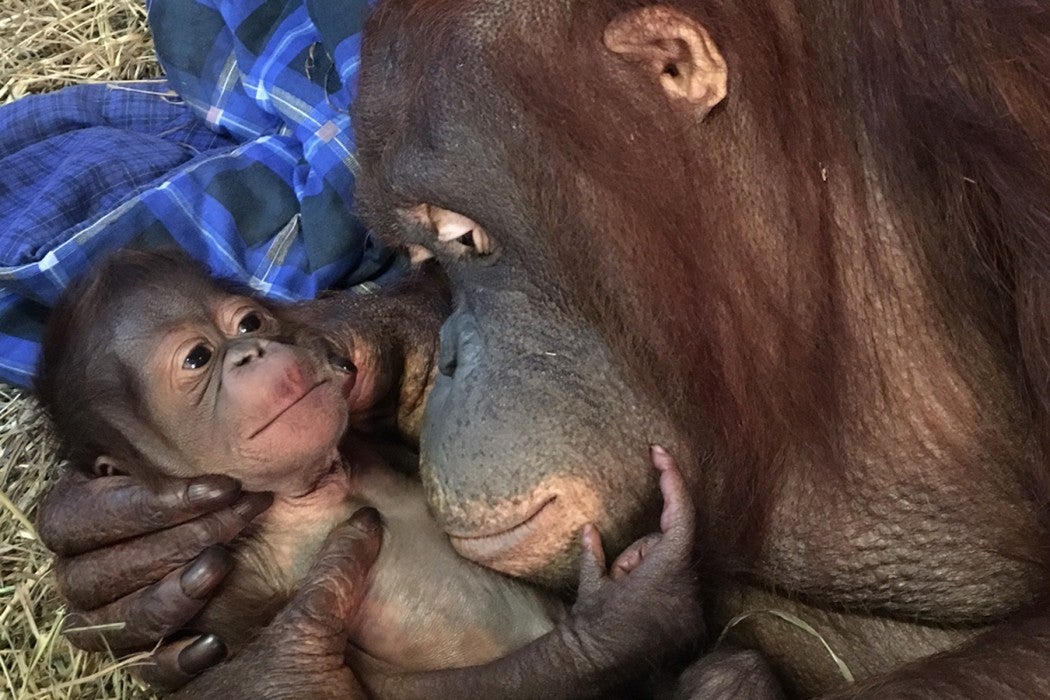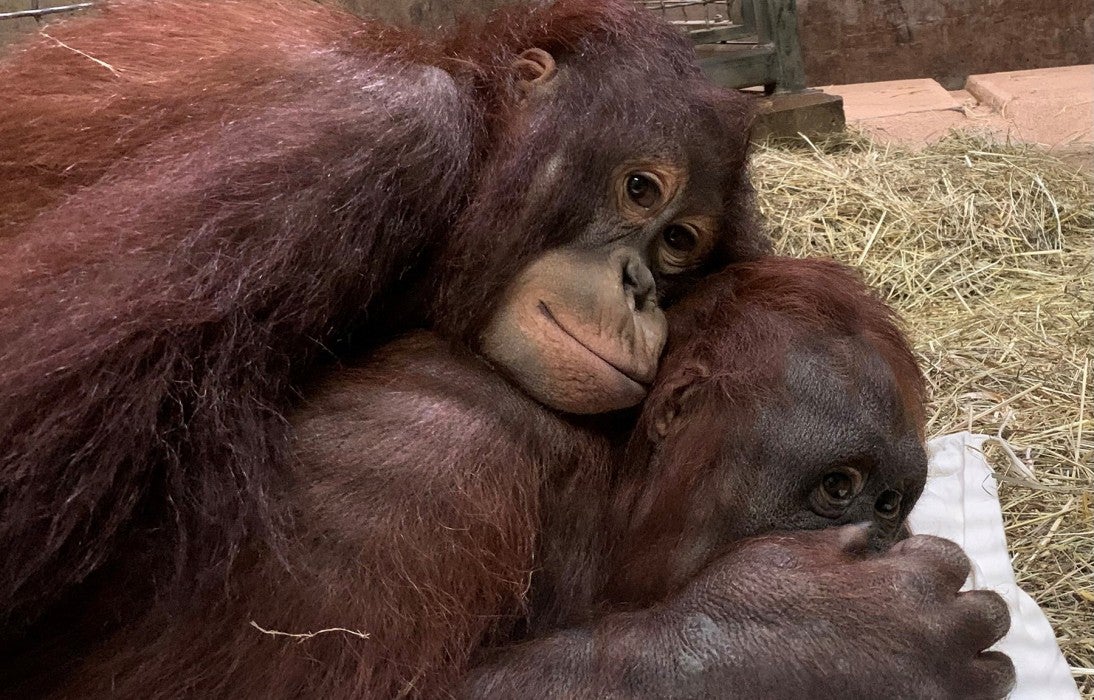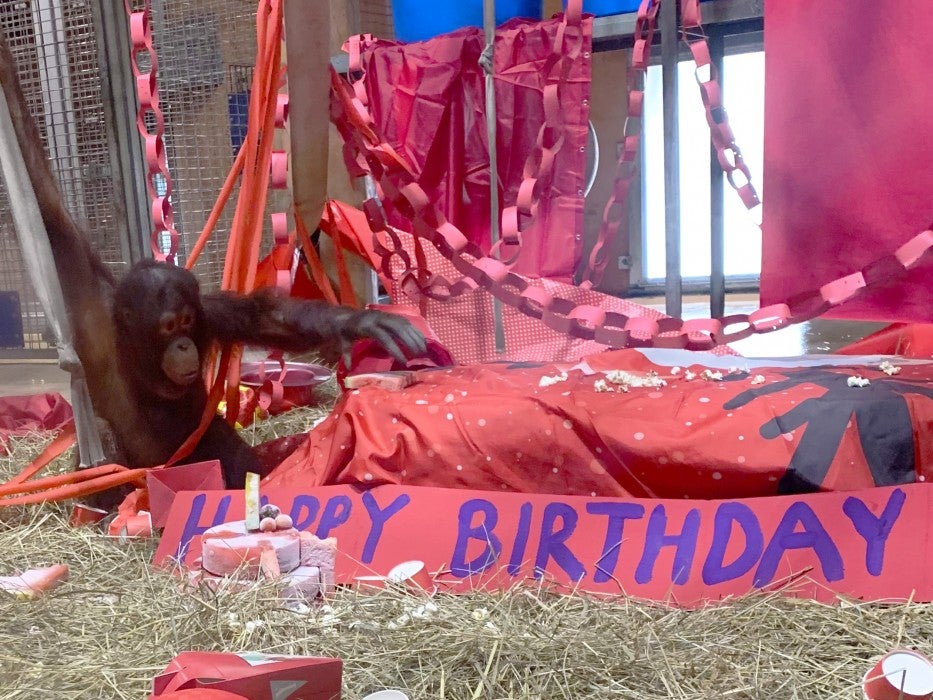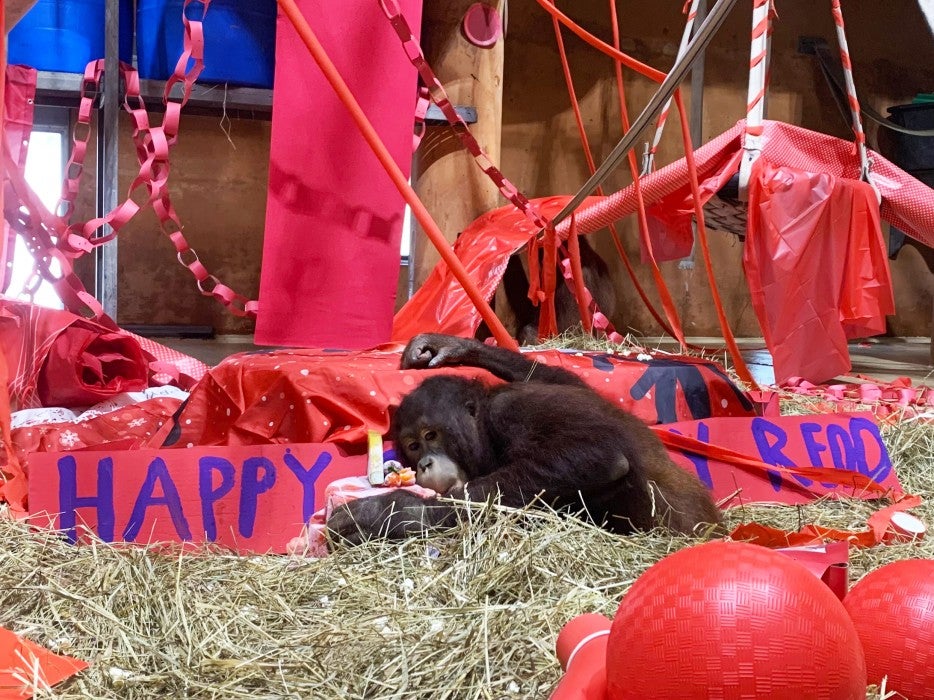#OrangutanStory: Happy 6th Birthday, Redd!
Summer is drawing to a close, which means our young Bornean orangutan, Redd, will celebrate his sixth birthday soon on Sept. 12. Even though he is the “baby” of the orangutans, he has really grown up over the past year. To many visitors, his 50-pound frame seems small, especially compared to our 4-year-old western lowland gorilla youngster, Moke, who is growing fast and built like a tank. When Redd drapes his lanky frame across his mother Batang’s back, though, they look quite similar in size!
Orangutans have the longest infant dependency period of all the mammals. They stay with their mothers for up to 7 years, and often nurse for comfort up to that point. They also mature slowly. For Redd to reach his full adult male stature—complete with large cheek pads and long hair—it may take until he is between 15 and 20 years old. He has to put on a lot of weight, too. His father, Kyle, is about 250 pounds.
Video | Who's ready to Rock n' (un)Roll?! Primate keepers gave Redd a roll of brown butcher paper to unfurl for enrichment. The crinkling of the paper made for some pretty powerful percussion!
Redd continues to be his “auntie” orangutans’ favorite playmate. Lucy, Bonnie and Iris all dote on him and vie for his time. They wrestle with Redd, hide under sheets and roughhouse with him. He gets a big kick out of it! Seeing our older females channel their inner youngsters as they play with Redd is so heartwarming and fun to watch.
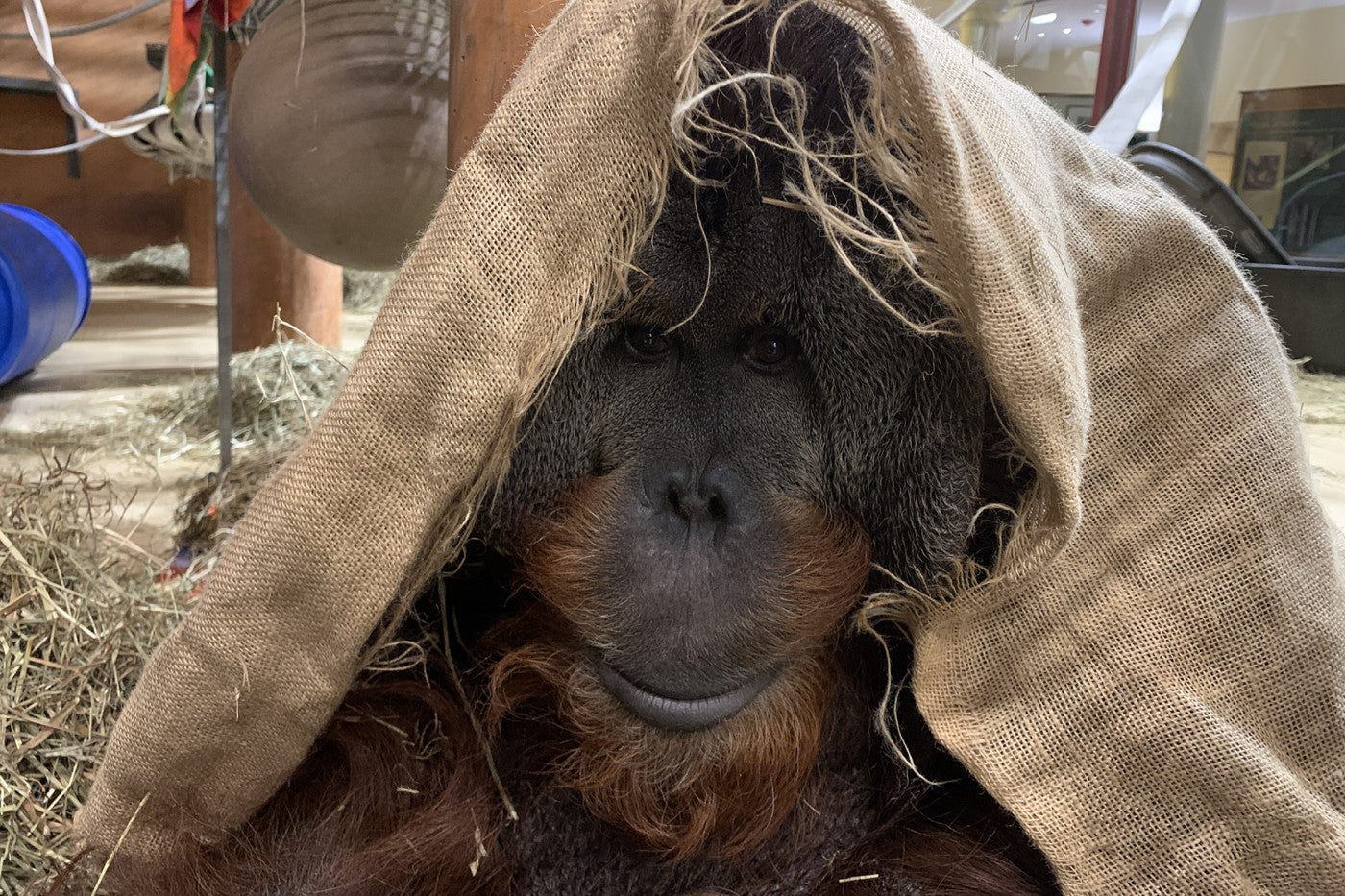
With our adult males, though, usually Redd initiates play. Kiko is often a reluctant play pal. It can be difficult to discern whether Kiko’s style of interacting with Redd is actually play or just him batting the youngster away when he gets annoyed with him. That said, Kiko puts up with a lot. Redd likes to put his face right up to Kiko’s while he eats, hoping he will share his food. (Here’s a little secret: Kiko never shares.)
Kyle, on the other hand, is much more tolerant of Redd’s antics. Redd is fascinated by Kyle’s cheek pads, long hair and big hands, and much of his attention goes toward those three things. We often see Redd grab Kyles hands or hair and shake them up and down!
Of course, any time another orangutan can occupy Redd’s time, Batang can have a bit of a break.
Earlier this year, Redd achieved a big milestone which really highlights his increased maturity and independence: a routine medical exam under anesthesia. The primate team conducts daily positive reinforcement training sessions with all of our great apes, and Redd in particular has been a stellar student!
Redd’s attention span is getting noticeably longer as he gets older. Just like with human children, who can sit still and pay attention longer when they are in first grade more so than when they were in kindergarten, Redd is able to focus more on training behaviors. He seems to enjoy learning and has even voluntarily allowed us to administer all his necessary inoculations. Redd is making great progress, though he still has temper tantrums when Batang doesn’t share her enrichment!
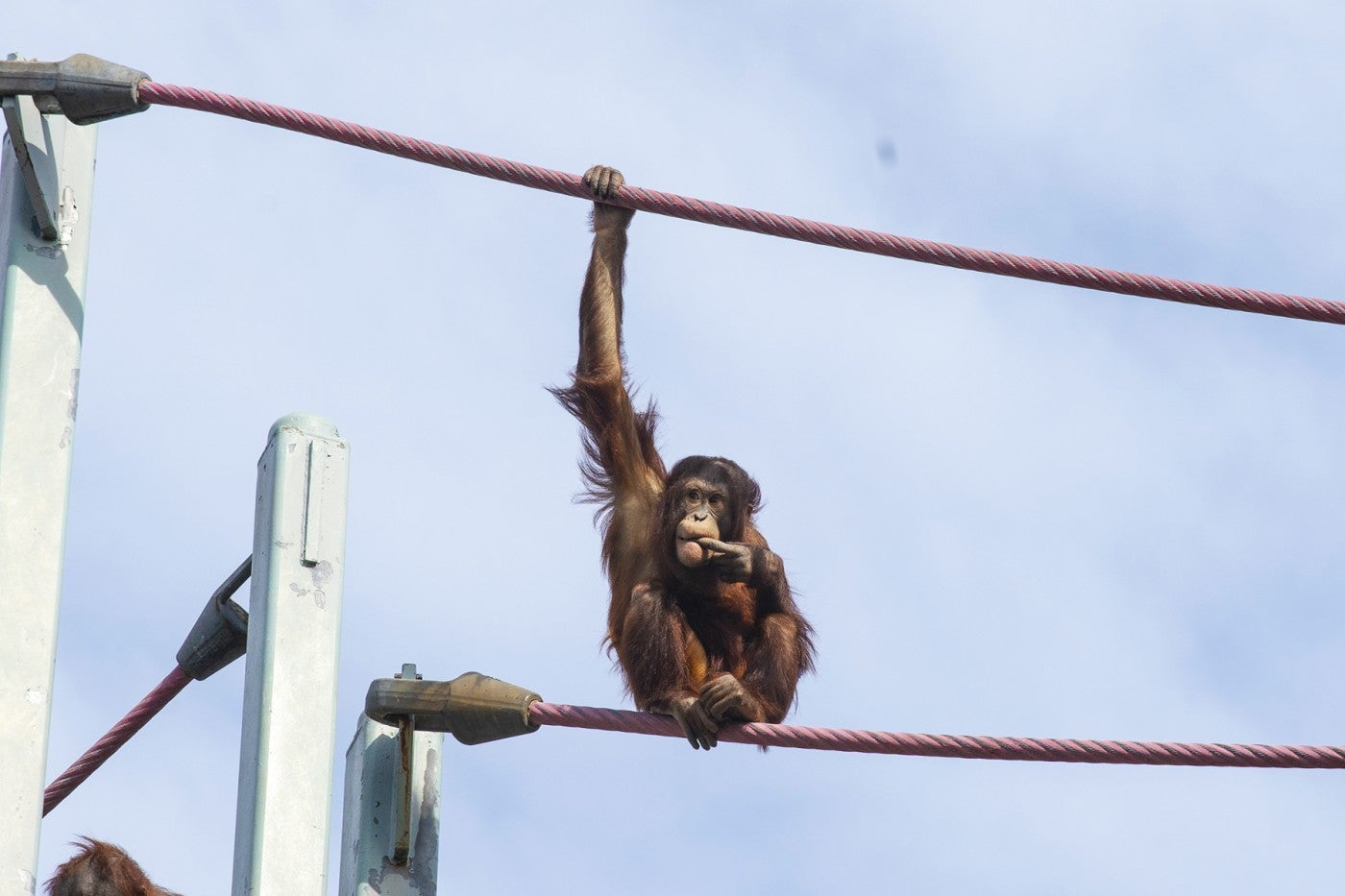
Even with training, there are some veterinary procedures that our team cannot do while the orangutans are awake for safety reasons. These include routine preventative health exams, which occur every three years or so. This year, it was Batang and Redd’s turn to undergo exams under anesthesia.
Due to Redd’s age and size, we separated him from Batang for this anesthesia injection. The morning of the exam, they both shifted into their respective enclosures and received their anesthesia, which resulted in a smooth simultaneous exam. I am happy to share that both received a clean bill of health!
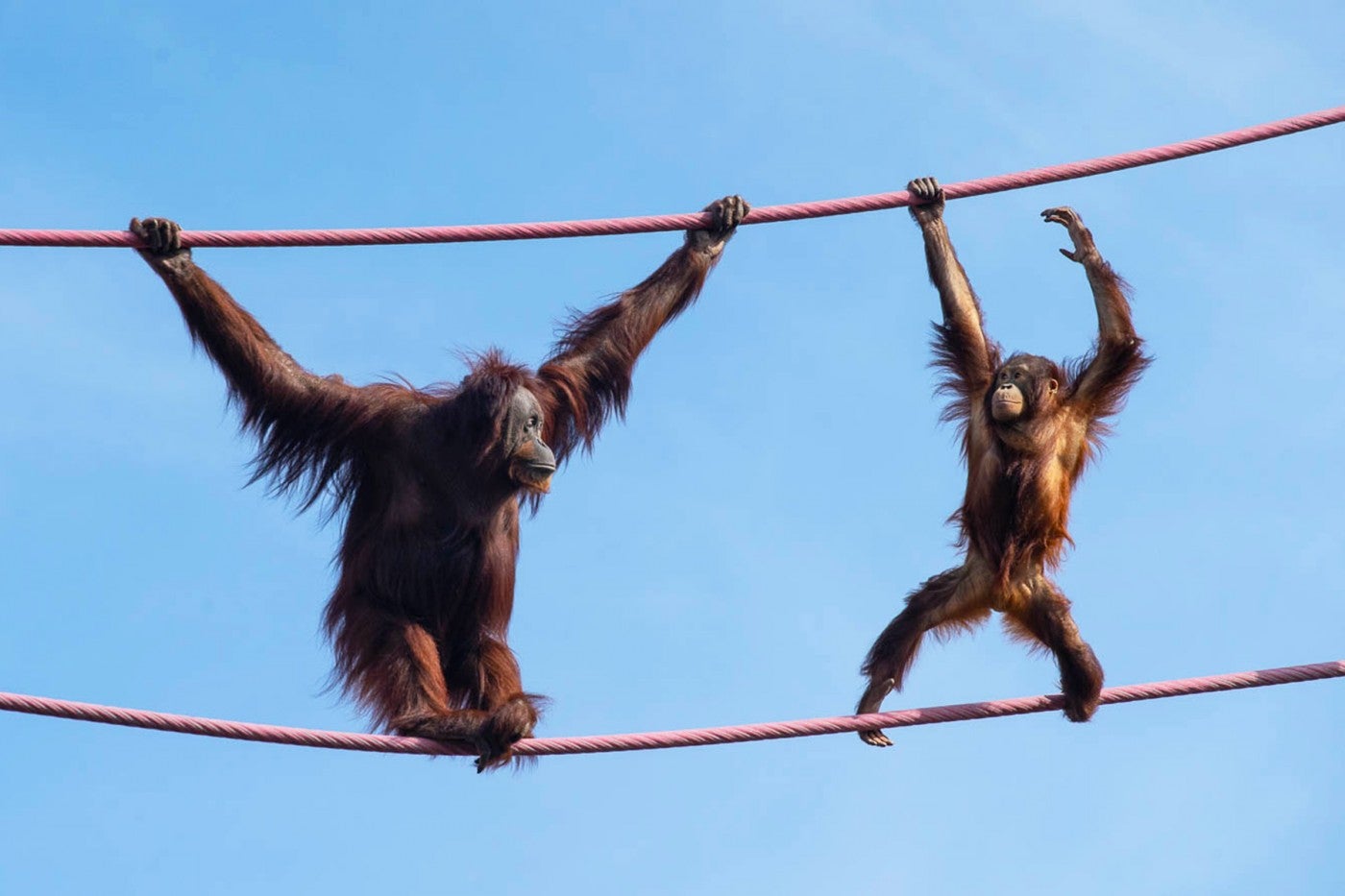
In the wild, orangutans spend much of their time in the trees. To get around, they brachiate (swing hand-over-hand) or clamber (carefully climb, walk or tree sway). Our orangutans have access to the Orangutan Transit System, or O-Line, which enables them to demonstrate this natural behavior as they travel between the Great Ape House and Think Tank exhibits. It also gives them the opportunity to choose where they would like to spend the night.
It’s always a thrilling sight to see the orangutans traveling, especially Redd. As we’ve mentioned in previous #OrangutanStory updates, his method of getting around is a little different. Redd seems to prefer doing upside-down cartwheels across the cables!
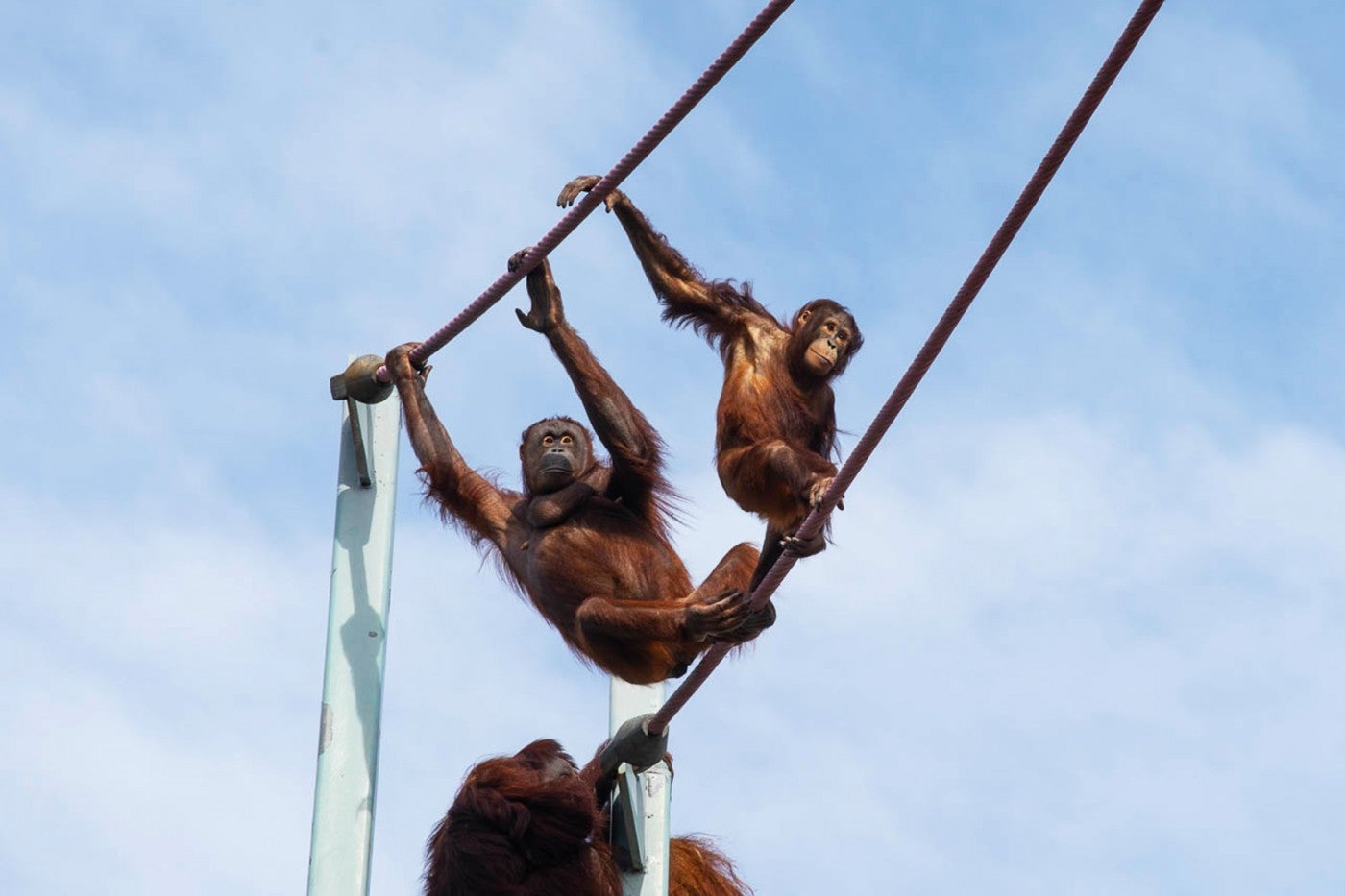
Over the years, Batang seems to have gained some confidence in his antics. These days, she still follows behind him as they cross, though not as closely as she once did. If you’re planning a trip to see the birthday boy, look up—he may be hanging 50 feet in the air!
This article appears in the September 2022 issue of National Zoo News. Want to learn more about Redd, Moke and all the primates at the Smithsonian’s National Zoo and Conservation Biology Institute? Read the latest news on our website.
